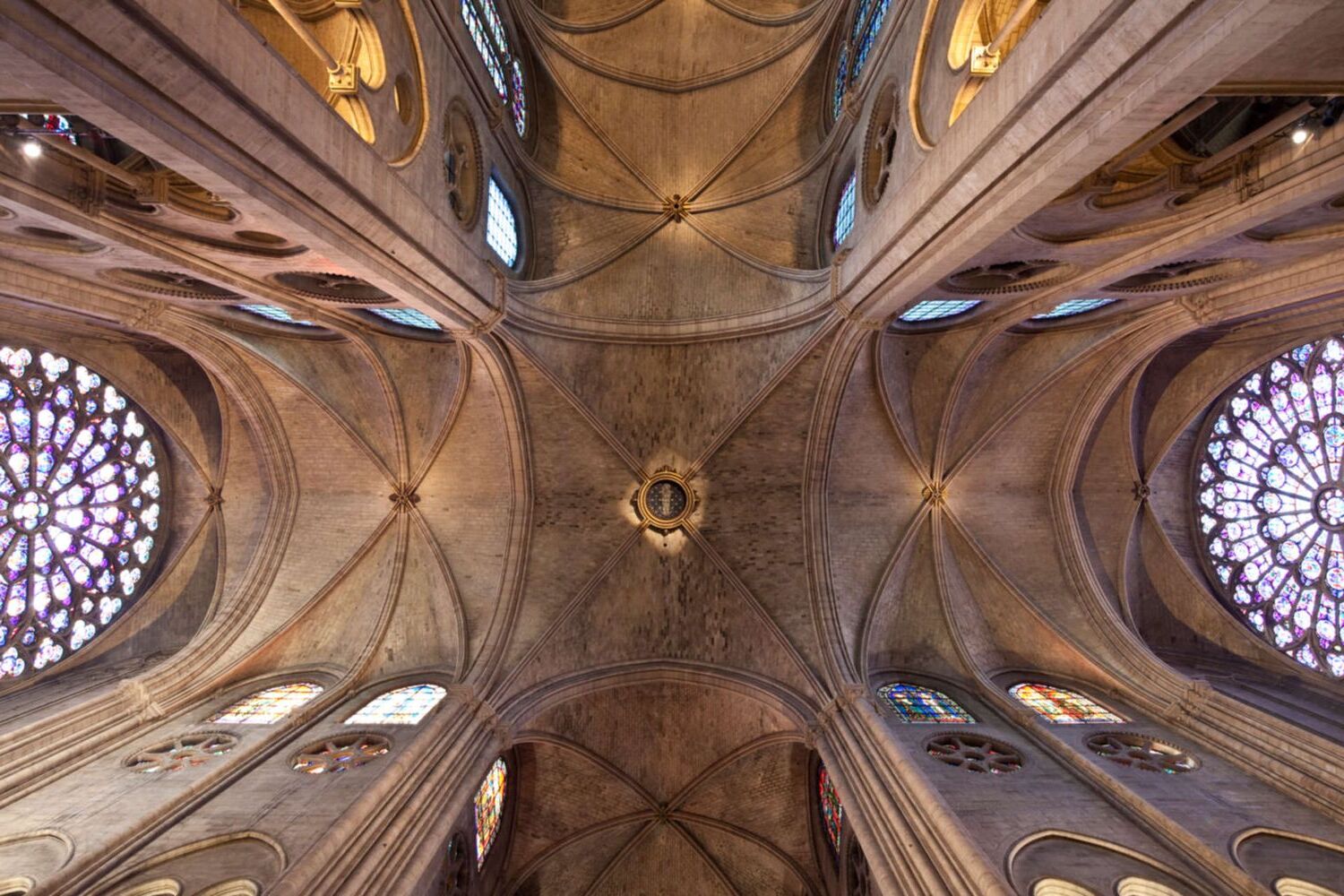
What is a transept? A transept is a key architectural feature in many churches and cathedrals. It forms a cross-like shape by intersecting the main body of the building, known as the nave. This design not only adds visual interest but also provides extra space for seating, chapels, and other functions. Transepts have been around since the 4th century, originating in early Christian churches in Rome and Constantinople. Over time, they have evolved to include various styles and complexities. From the stunning stained glass windows of Notre-Dame de Paris to the intricate stone carvings of York Minster, transepts are both functional and symbolic, representing the arms of Christ in Christian architecture.
Understanding the Transept
The transept is a key architectural feature in many religious buildings, particularly churches and cathedrals. It creates a cross-like shape when viewed from above, adding both aesthetic and functional value.
- A transept is a transverse section of a church or cathedral that crosses the nave, creating a cruciform shape.
- Its primary purpose is to provide additional space for seating, chapels, and other architectural features.
- The concept of the transept dates back to early Christian churches, with the first known examples in 4th-century Rome and Constantinople.
Architectural Significance
Transepts are not just about adding space; they play a crucial role in the overall design and balance of a church.
- Transepts help to balance the nave and provide symmetry, creating a sense of order and harmony.
- They serve as visual markers, separating the main body of the church from other areas.
- There are several types of transepts, including simple, double, and triple transepts.
Notable Examples
Some of the world's most famous churches and cathedrals feature impressive transepts.
- Notre-Dame de Paris features a double transept with stunning stained glass windows.
- St. Peter's Basilica in Rome has a triple transept, symbolizing the Holy Trinity.
- York Minster in England is known for its intricate stone carvings and ornate decorations.
Symbolism and Spiritual Significance
Transepts often carry deep symbolic meanings, especially in religious contexts.
- In Christianity, transepts represent the arms of Christ.
- In other faiths, they may symbolize the connection between heaven and earth.
- For many, the transept represents a sacred space where they can connect with their faith.
Chapels and Aisles
Transepts frequently contain chapels or aisles that serve as additional spaces for worship or contemplation.
- These areas can be dedicated to specific saints or events in the life of Christ.
- They provide additional seating capacity during services.
- They create separate areas for different activities or events.
Decorative Elements
Transepts are often adorned with intricate carvings, stained glass windows, and ornate decorations.
- These elements enhance the aesthetic appeal of the building and provide a sense of grandeur.
- Stained glass windows in transepts often depict biblical scenes or saints.
- Intricate carvings and sculptures add to the spiritual significance of the space.
Structural Integrity and Construction Techniques
The design of a transept must ensure structural integrity, balancing beauty with practicality.
- The weight of the roof and any additional features like chapels or towers must be evenly distributed to prevent collapse.
- Historically, transepts were constructed using traditional techniques such as stone masonry and bricklaying.
- Modern construction methods often incorporate steel frames and reinforced concrete for added strength.
Restoration and Preservation
Many historic churches and cathedrals have undergone restoration efforts to preserve their original designs.
- These projects involve careful analysis and reconstruction to maintain the integrity of the transept.
- Preserving historical transepts is crucial for maintaining cultural heritage.
- Conservation efforts ensure that future generations can appreciate their beauty and significance.
Cultural and Community Impact
Transepts have had a profound cultural impact, influencing architectural styles and community engagement.
- The design of transepts has influenced secular architecture, particularly in public buildings like museums and libraries.
- Transepts provide spaces for various activities such as concerts, lectures, and social gatherings.
- They foster a sense of community among worshippers and visitors.
Educational and Tourism Value
Transepts offer valuable educational opportunities and attract tourists from around the world.
- They provide a tangible example of historical and architectural evolution.
- Historic churches and cathedrals with impressive transepts contribute significantly to local economies through tourism revenue.
- Visiting a church or cathedral with an impressive transept can be a deeply spiritual experience.
Architectural Evolution and Innovations
The design of transepts has evolved over time, reflecting broader societal shifts and technological advancements.
- New techniques and materials have been developed to create more complex and beautiful structures.
- Transepts have driven architectural innovations over the centuries.
- Modern architects often reinterpret traditional elements to create unique and functional spaces.
Symbolic Representation and Cultural Exchange
Transepts can symbolize various aspects of faith or culture and have facilitated cultural exchange.
- In some Christian traditions, the transept represents the arms of Christ stretched out in sacrifice.
- The transfer of architectural ideas has enriched the diversity of religious and cultural heritage.
The Timeless Appeal of Transepts
Transepts are more than just architectural features; they're a blend of history, art, and spirituality. These cross-shaped sections in churches and cathedrals have been around since the 4th century, evolving in design and significance. From Notre-Dame de Paris to St. Peter's Basilica, transepts have left their mark on some of the world's most iconic structures. They balance the nave, add symmetry, and often house chapels and aisles. Their intricate carvings, stained glass windows, and structural integrity make them a marvel of engineering and art. Beyond their aesthetic appeal, transepts hold deep symbolic meaning, representing the arms of Christ or the connection between heaven and earth. Whether you're an architecture buff or a casual observer, the timeless appeal of transepts is undeniable. They continue to inspire and captivate, standing as a testament to human creativity and spiritual expression.
Was this page helpful?
Our commitment to delivering trustworthy and engaging content is at the heart of what we do. Each fact on our site is contributed by real users like you, bringing a wealth of diverse insights and information. To ensure the highest standards of accuracy and reliability, our dedicated editors meticulously review each submission. This process guarantees that the facts we share are not only fascinating but also credible. Trust in our commitment to quality and authenticity as you explore and learn with us.


